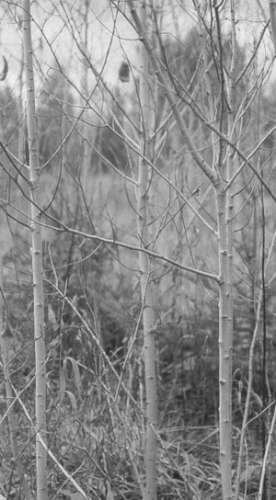A climax forest is a good place to start an argument with an ecologist. To some, it is a nice name for forests that have escaped disturbance by outside forces like storms or diseases or logging long enough to have settled into a condition of relative stability. That is, the composition and structure of the forest don’t change much over long periods of time. But to others hearing the name, it’s like fingernails on a chalkboard.
The best way to grasp the idea of the climax forest – and why some don’t like the term – is to first understand that the concept is itself just one component of an even larger ecological view of how forests develop and change over long periods of time. This larger concept, known as forest succession, explains how even when people leave them alone, forests change. Trees and other plants grow, mature, reproduce, age, and die. Soils build and erode. Weather changes daily, and climate varies over long periods. Animal populations come and go. With time, these sorts of changes bring still other changes that go beyond the sizes of the trees to involve shifts in the kinds (species) and mixes of trees growing in the forest.
We’ve all seen how pastures or hay meadows grow up to weeds and brush after the cows or mowing machines are sold. And we’ve seen how those brushy fields of goldenrod and meadowsweet in time become thickets of aspen, grey birch, or maybe white pine. We’ve also seen how, if left alone, those thickets eventually become stands of pole-sized trees. The birches are dead on the ground, most of the aspens are snapped in half, and the pines are racing to stay atop the maples and ash growing up from below. This is one example of forest succession. The specific players vary among locations, but that is the general pattern. One assemblage of plants outcompetes and succeeds another as the very presence of one group alters the growing environment in favor of the next.
Eventually, if these forests escape major disturbance long enough, they become dominated by trees of species such as sugar maple, American beech, or eastern hemlock. Although these species may be present in the early going, they tend to become dominant later in the succession of change. They are capable of living a very long time – hundreds of years – without being replaced by other mixes of species. In fact, unlike their fast growing, short-lived, early successional counterparts – called “pioneer” species – whose seedlings tend to die in the understory, the seedlings and saplings of these “climax” species are very tolerant of shade. This is key. Climax species’ seedlings are capable of surviving in the understory and can therefore grow up to replace overstory parent trees that die. When this happens, the forest’s mix of species remains relatively constant for extended periods. This is what some have called the climax forest.
Ecologists have been kicking around these ideas for just about a hundred years now. And they continue to study the specific mechanisms of change. But, while nobody seems to disagree much about the general ideas of forest succession, many have a problem with assigning the name “climax” to the later stage. That’s probably because the name has carried some serious baggage over the years. In addition to getting mixed up with the politically charged terms “virgin” and “old-growth” forests, the term “climax forest” has also been subjected to much scientific debate.
Somehow, the climax forest came to be seen as an endpoint of the successional sequence. It was the final stage; once attained, it maintained itself forever. Worse yet, it came to carry the connotation that climax is inherently good and somehow better than early successional stages. Both perceptions have become common, which is a major irritant to the many ecologists who see disturbance, both natural and human-caused, as an inescapable fact of forests. To them, there is no endpoint to succession, as long as the forest remains in some form and has not been paved. Indeed, forests generally take a beating. Almost all of ours in the Northeast have been logged more than once over the last couple centuries (many were cleared for agriculture), and most have been subjected to all kinds of storms, fires, blights, and more. Even stands that do escape such forces for long periods eventually succumb to some form of disturbance. When they do, their vegetative pattern is set back to an earlier stage and the process continues anew. In this view, succession is more of a cycle of varying durations than a straight line with a single endpoint. Perhaps “late successional” is a more accurate, if less sexy, name for forests that have escaped disturbance for long periods.



Discussion *